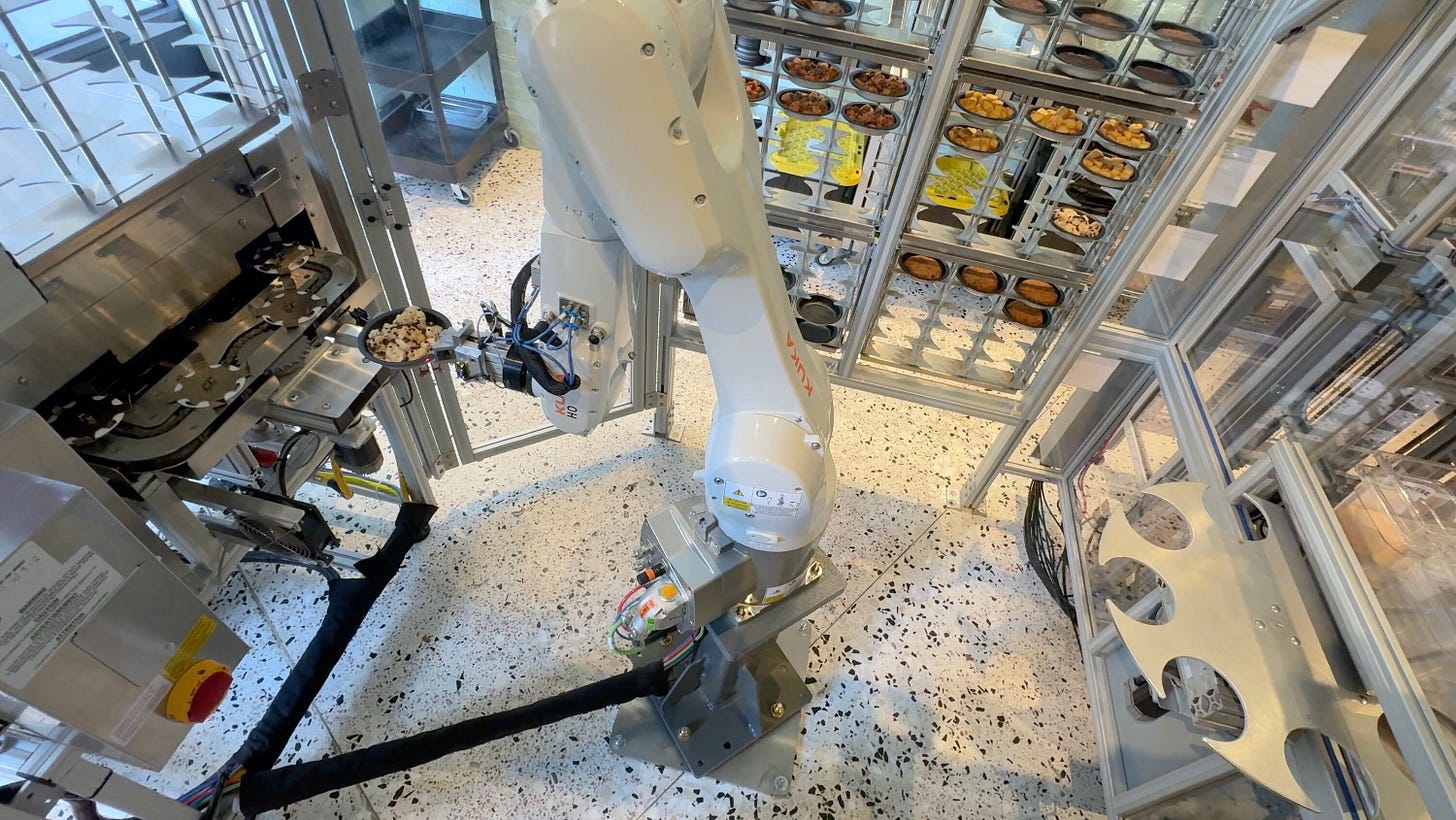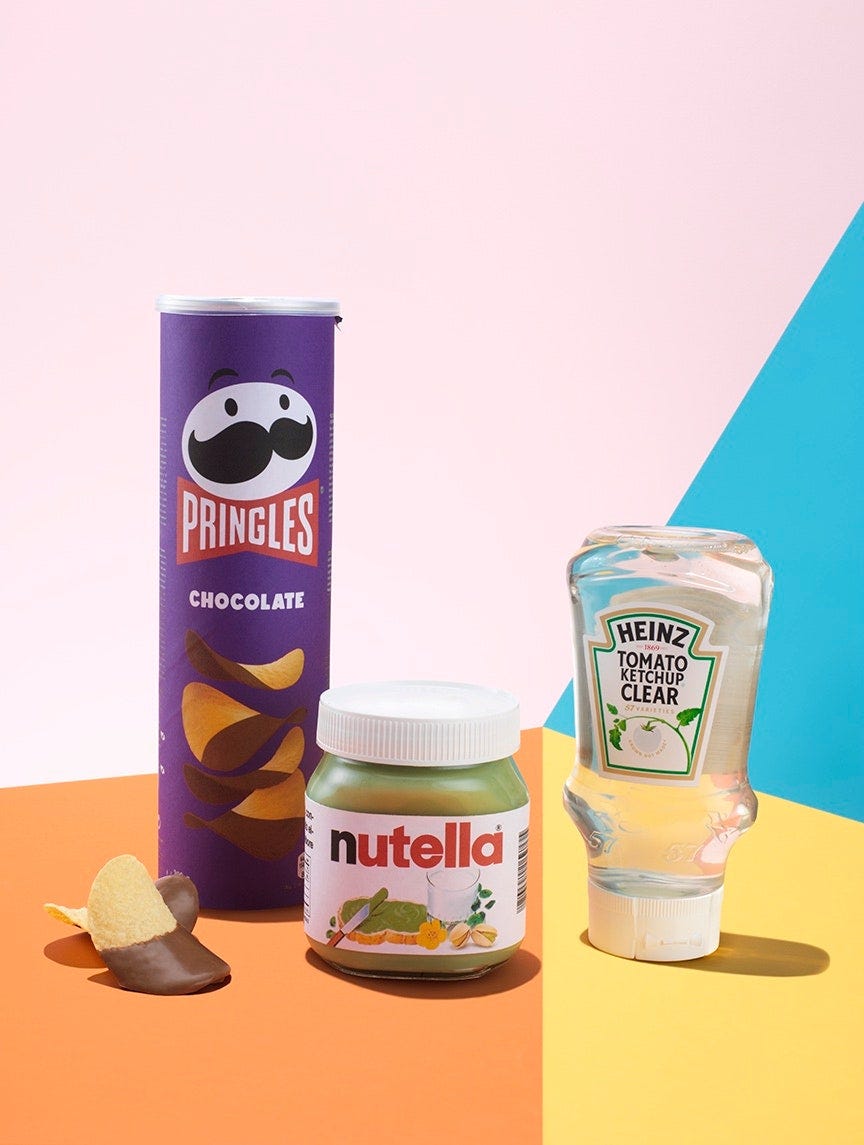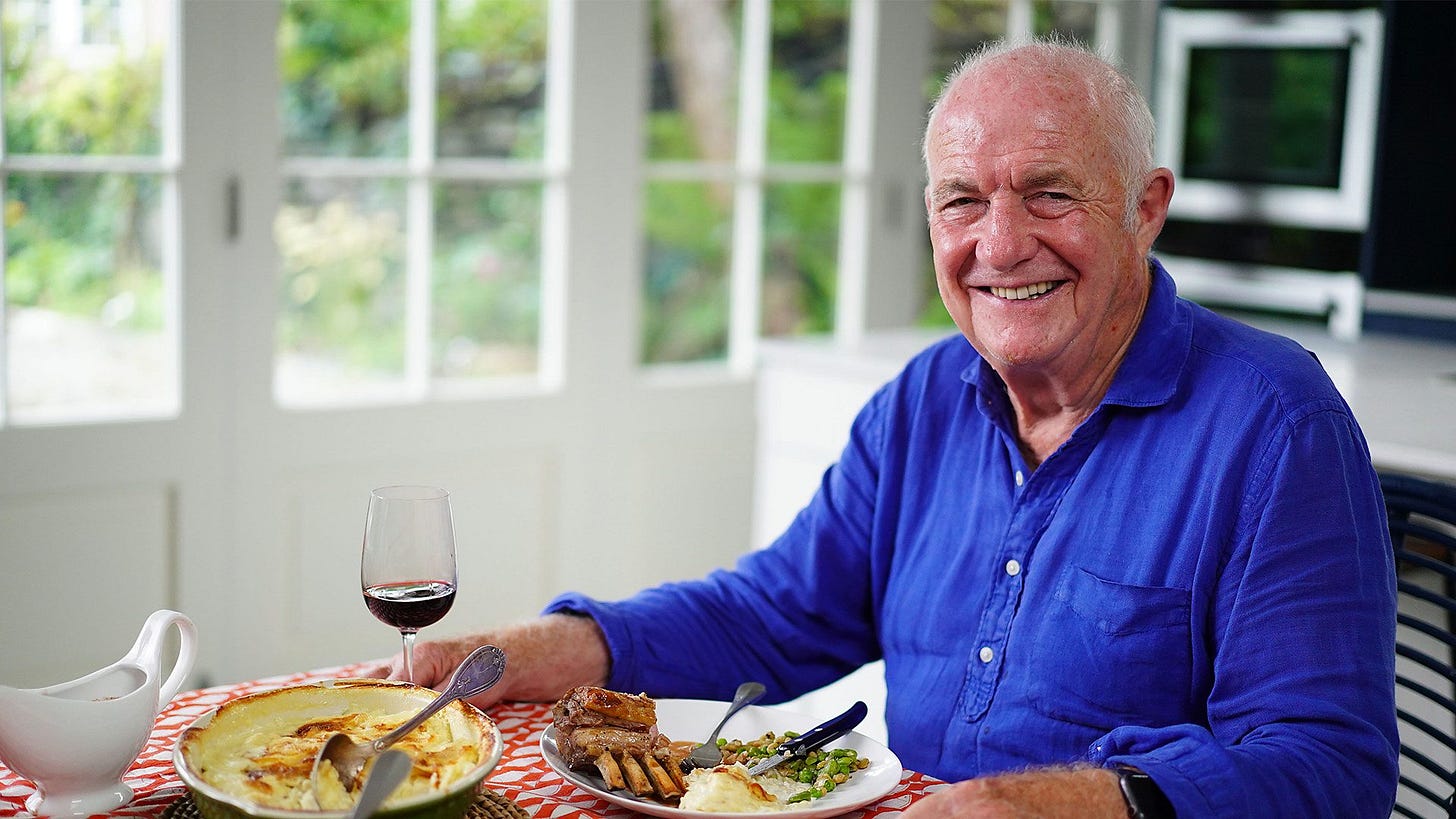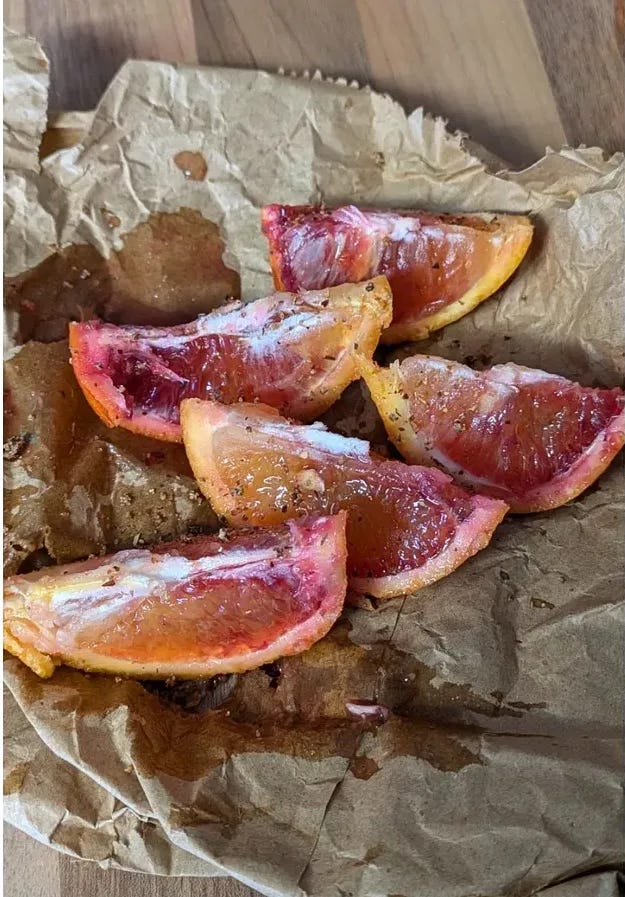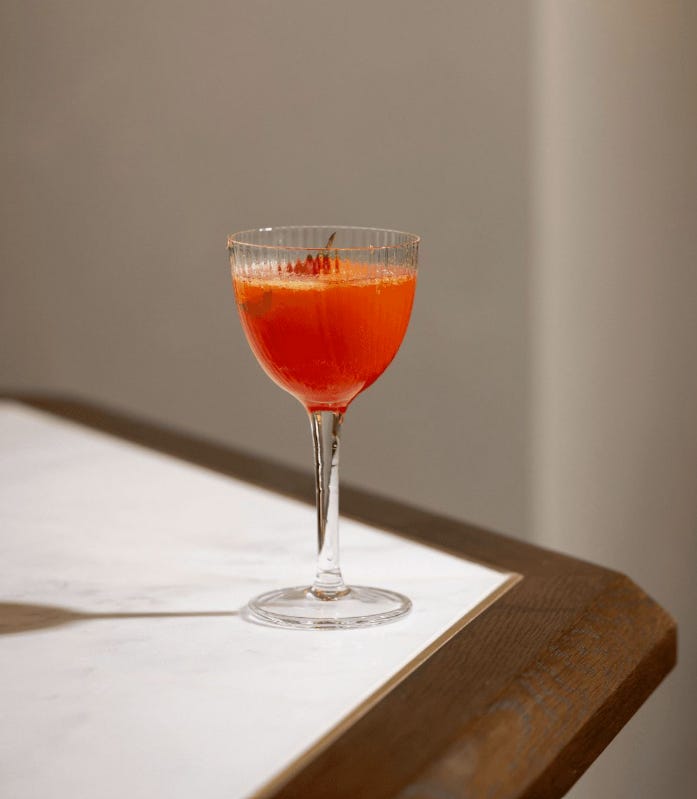ChatGPT Sommelier or AI Robot Waiter?
Same newsletter, new name. AI and tech, meet food industry, The tradwife phenomenon, Have you been snackfished, Small Pleasures, Blood oranges, The strange allure of Rick Stein and more!
Hello!
Thanks for tuning into another newsletter, the year has well and truly kicked off now. I’d like to take a moment to address the newsletters name change - Sobremesa. In Spanish, sobremesa is more than just a word. It’s a feeling, a tradition, a moment suspended in time. It is the warmth of lingering after a meal, where laughter lingers like the last rays of sunlight and conversations flow as freely as the wine. It is the art of savoring not just the food, but the company, the connection, and the stories shared around the table.
Because the true beauty of dining is not just in what we eat, but in the moments that linger after the last bite. This newsletter has expanded beyond my more self-indulgent travels and food and beverage experiences, and has become more interested in the cultural wonderings, the why behind the what, and at its core, tidbits for my readers to use to further the conversation within their communities.
As the newsletter has grown into itself, finding its voice, I wanted to find a name that represented its words. I hope to continue to represent Sobremesa authentically, as both myself and my newsletter continue to learn.
A lot of dark and scary things going on in the world at the moment. I am reminded of Judith Butler’s book Precarious Life: The Powers of Mourning and Violence and their argument that the possibility for change lies within our response to the precarity made by violence and loss in our lives. Community is where change begins. This passage that Apt 2 Bread shared in her recent newsletter felt appropriate to share.
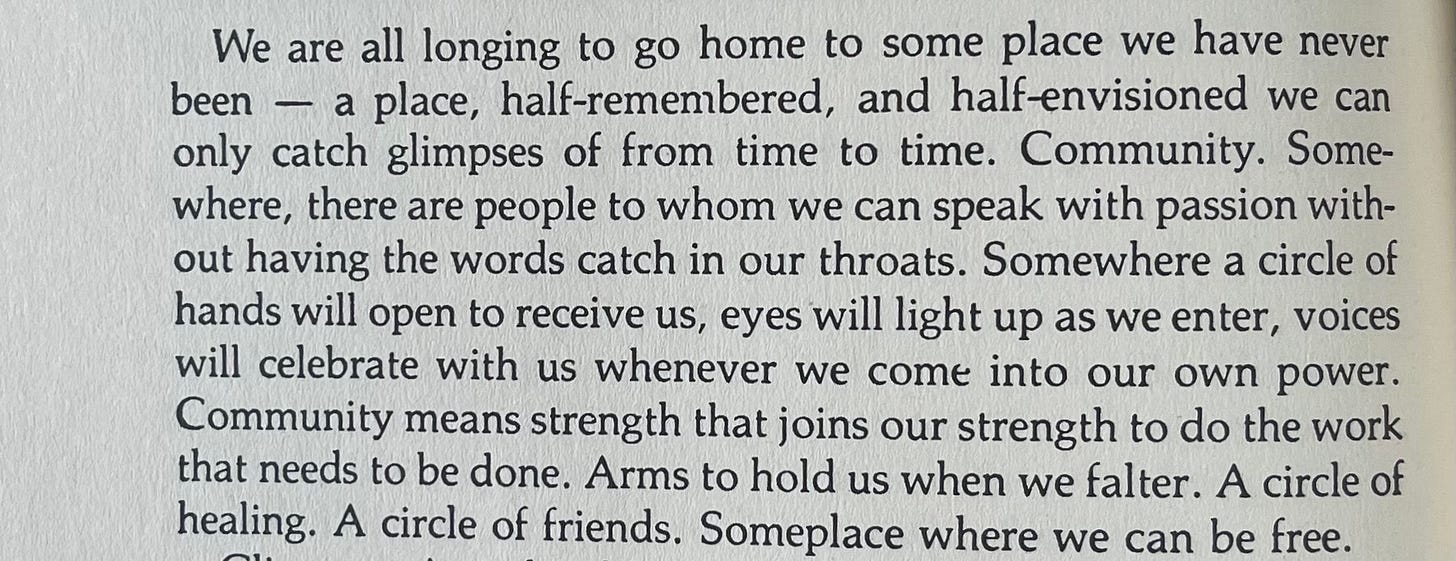
This week:
Why is it so hard to make a robot chef?
ChatGPT Sommelier
Have you been snackfished?
On Tradwives
The “strange allure” of Rick Stein
Small pleasures
A blood orange sgroppino
Why is it so hard to make a robot chef?
The New York Times came out with an article by Julie Creswell at the end of the year that caught my attention about restaurants experimenting with automation and how it is (largely) failing. My mind immediately goes to that art piece of the robot trying to clean up blood.
“Chipotle, where labor costs could reach $2.7 billion this year, or a quarter of its revenue, has been testing the Autocado, a machine that can cut, pit and scoop out an avocado in 26 seconds. White Castle has installed a system called Flippy to make fries and other items in 18 locations in the United States. And Sweetgreen, the fast-casual salad chain, will have an automated salad-making system, the Infinite Kitchen, in about a dozen of its 240 restaurants by the end of this year.”
“But despite high interest in robots in the kitchen and years of efforts, they have yet to take off.”
“Unlike car factories or Amazon warehouses, which rely on robots to perform repeatable actions, restaurant kitchens run on multitasking. Flipping pancakes requires a different system from one that dispenses coffee or makes spaghetti. Moreover, producing potentially sticky, gooey or cheesy foods means robots need to be easy to clean to maintain food-safety standards.”
The robots alone typically cost upwards of 6 figures, so at the moment it’s only the big multinational corporations who have deep enough pockets. It’s also not practical to fit automated systems and robots in most restaurant kitchens. Additionally, customers are still fairly hesitant about the idea itself, not to mention the robots often don’t get it right...
I would certainly prefer to know a human is making my food and getting paid for it. But as always, profits trump almost anything “The system is worth it, Sweetgreen executives say. It can churn out 500 bowls in an hour, compared with a top human speed of about 300.”
ChatGPT Sommelier:
Speaking of robots and AI, wine critic for the Guardian Hannah Crosbie, asked ChatGPT to become a sommelier for the night in a piece featured in Nobel Rot Magazine. She asked it to pretend to be “a knowledgeable, quick-witted somm working at Nobel Rot Lamb’s Conduit, and gave it a PDF of the venue’s up-to-date wine list”.
The conversation was published in the magazine which Crosbie prefaces with “No spoilers, but I think the industry is going to be fine. If I ever met someone this chirpy in real life, I’d call the police.”
“I highly doubt the sommelier has much to fear from AI. Elon Musk has called it “the most disruptive force in history”, but what does he know? Find me a picture of that man in a suit that fits him. Besides, when it comes to computer vs wine, wine wins every time. Ask anyone who’s frequently got a glass within an accidental elbow twitch of their keyboard”.
Choose your fighter. Robot waiter or ChatGPT somm? Who is your bet on?
Have you been snackfished?
Continuing with the AI and food theme, I read this piece in Wired about the concept of ‘snackfishing’ and the fake viral products you may have seen over the past year or so.
“You’ve heard of a “catfish”—a fake online identity adopted by someone who wants to trick or scam other people. Transparent ketchup was a “snackfish,” and Benji is the UK’s number one snackfisher. Benji’s Instagram account—UK Snack Attack—is home to pistachio-flavored Coco Pops, pickle-shaped Haribo, mint Coca-Cola, ice-cream Pringles, and butter Oreos.”
Benji initially began searching for imported Fanta flavors and “weird” snacks, posting them on his instagram. When lockdown started, instead of going out and searching for food he started making it on photoshop and sometimes making it for real! (The chocolate pringles for example haha).
He isn’t a total troll, today he adds a disclaimer “THESE DO NOT EXIST” at the bottom of his posts. But often people don’t bother with captions or particularly care about the truth. The ‘shock factor’ of the images are enough to make them viral. He makes no money from the account, it remains a fun creative outlet. Benji just admits it would be cool to have a company turn one of these products into a reality.
Corporations have been known to make weird and ‘trendy’ exclusive ranges of their products before, so it’s not totally out of the question. But I will be sure to look twice the next time I see one.
On Tradwives
Alicia Kennedy, whose food writing and criticism I admire wrote about the phenomenon of ‘Tradwives’, from the perspective of a chef/food writer/feminist. I love how Kennedy uses food as a lens to talk about societal issues and reveals the ways in which cooking, eating, and consuming are all inherently political.
A tradwife is “a woman who believes in and practices traditional gender roles and marriages”.
Nara Smith is a German–South African model and influencer, famous for making food from scratch while wearing gowns and yes, looking like a model. She has made everything including bubblegum and coca-cola. Her videos have been mega-viral and naturally brought a lot of support and criticism both for her ‘un-relatability’ and ‘promotion’ of unrealistic tradwife expectations.
Kennedy wrote an interesting article in her substack about the politics of women cooking and the virality of tradwives. On the one hand, stating:
“Branding someone like Smith with the “tradwife” label has often seemed, to me, to be an easy way to hate on women with the shield of liberal righteousness. It becomes the woman’s responsibility, always, to carry on her back the evolution of society, whether said evolution is understood as “women may live as they please” or “women are our sacred mother-babies who need ‘protection’ from ‘gender ideology.’” What message does it send to women to suggest that if they are wives, mothers, and cooking, they’re actually pawns in the conservative agenda regardless of their self-identification or actual beliefs?”
In saying this, Kennedy admits “There is a crunchy to alt-right pipeline. It has roots in eugenics, Nazism, white supremacy, and general ecofascism. The ideology is obsessed with “pure,” “clean” ingredients free of chemicals, dyes, seed oils! They want raw milk, despite bird flu.”
A lot of the criticism for these videos is missing the point that capitalism isn’t working for most people. Further, real concerns about healthy eating, knowing where your food is from, and mass-produced products have been picked up in a big way by people on the right and often coupled with a politics of conservatism, ideas of traditional gender roles (that women should only be stay-at-home wives and mothers), and a wellness conspiratorialist (think RFK Jr.). The mass attention and interest in the trad-wife figures like Nara Smith and the Ballerina Farm family say something in themselves, after all “attention itself is political”.
“Has right-wing homesteading, anti-vax, and trad content swooped in to fill in the gaps of hope for people? Yes.”
What is missing from the larger conversation Kennedy argues is that “knee-jerk responses to women cooking, the cultural obsession with actual and suspected tradwives, as well as the mainstream emergence of RFK Jr.–type conspiracy-minded wellness, are all symptoms of very broken relationships to and understandings of food systems, the value of domestic labor, and health care in the United States. They’re not the root of the tree; they’re its fruit.”
The “strange allure” of Rick Stein:
John Merrick wrote an essay published in Vittles on “the strange allure and bumbling anti-charisma of Rick Stein”. I did talk a little about “Why TV is full of late-career Hollywood guys at restaurants” in my previous newsletter.
If you’ve ever turned on the BBC in the afternoon you’ve probably come across Rick Stein, an English chef, restaurateur, and television presenter. I remember him best for his contribution to the brightly colored linen shirts phenomenon. Which I see as a broader prerequisite for TV travel and food show hosts, see below…

Anyways, in the witching hours of new fatherhood, Merrick began turning on the TV to find old reruns of Rick Stein’s shows. “These days he’s almost a figure out of time: the definition of pale, male, and stale, and one of the few remaining stalwarts of old-school British food broadcasting”. “The slightly superior knowingness, the clumsy literary reference” the pretentiousness, condescending, unthinking racism and sexism “you might expect of a man of his age, race, and class."
“A near-perfect neo-colonial trope.”
What makes Merrick keep watching then? He contemplates his ‘anti-charm’ suggesting perhaps it is because in so many of Stein’s enthusiasms, he is reminded of his own father (who has since passed) and the ways in which his early life is much more complexly interwoven with Stein and his shows than he has previously recognized.
“At their best, however, Stein’s shows still abound with his obvious passion not only for eating and drinking, but also for what food can represent – adventure and travel, sure, but also home, comfort, and family. His work is openly nostalgic.”
The relationship between food, power, politics, and history is something we contemplate a lot in this newsletter. I think Merrick’s essay neatly captures the conflict and nostalgic fondness we feel for all the Rick Steins on our screens.
A blood orange sgroppino:
If the grey skies are doing your head in blood oranges are your saviour. Blood oranges are in season!
If you’re looking to get inspired with blood oranges Nic Miller from Topographic Kitchens wrote a post with all sorts of recipes and ideas.
She shared a recipe for a blood orange sgroppino, a Venetian cocktail made with prosecco, vodka and lemon sorbet.
“To make the blood orange sorbet place 100g caster sugar and 500ml blood orange juice in a pan. Heat gently until the sugar has dissolved, then simmer for a minute. Cool completely then sieve into a bowl. Freeze until needed. If you don’t have an ice cream machine, pour it into a freezable container and give it a really good stir every couple of hours until frozen.” You can also make it with pimms.
(makes 2)
50ml vodka (or sub for another spirit)
I’ve seen recipes say 4 tbsp blood orange sorbet, but to be honest each to their own, I wouldn’t be rationing it haha.
200ml of dry Prosecco
Whisk the ingredients together in a small bowl until light and frothy and then pour into two chilled champagne flutes.
Small pleasures:
Finally, everyone always makes a comment about how January feels like it lasts at least 3 months. The comedown from the holidays, promises and good intentions for the new year, the facing of everything you pushed back in December, the harsh reality check of going back to work, the winter…
Anyway, one thing that came across my timeline that made me smile was this poem list of ‘Pleasures’ by Bertolt Brecht.
The Pleasure Lists is an instagram account collecting people’s own pleasure lists inspired by the poem. When everything feels a little overwhelming in the world it can be nice to look through them and remember the millions of tiny joys in our lives.
On a similar note, I’ve also been thinking about writer Tove Jansson (most popularly known for her Moomin series) and I watched a short documentary about her and her partner Tuulikki Pietilä and their life on a tiny Finnish island. The documentary, filmed in 1968, ends with them battering down the hatches for a storm and Jansson claiming the most important thing to have is “cigarettes… and then vodka, and then coffee… no wait somewhere between there is soap”. Maybe in the political storms we’re facing (forgive the cheesy earnestness) we should look for the small pleasures.
That’s all for this week folks! I hope you enjoyed reading and I’ll see you back here soon. If you haven’t subscribed yet, please do - it’s free! It means more to me than you would know. It really does keep the motivation high to keep researching and keep writing.
Carlie xx


